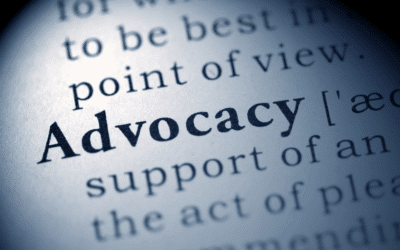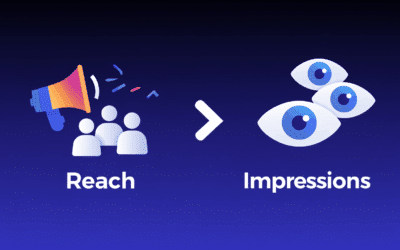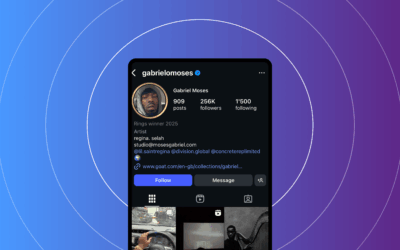7 Brands that work with micro-influencers
Brands that work with micro-influencers are tapping into a marketing goldmine!
Did you know that 56% of US and UK marketers work with micro-influencers on Instagram because they’re more cost-effective than top-tier talent? That’s right! 🤯
At Click Analytic, we’re going to unravel the micro-influencer magic.
We’ll explore how various brands harness their unique appeal, what makes these influencers a must-have in your influencer marketing toolkit, and how you can start working with them to elevate your brand.
What are micro-influencers?

Micro-influencers boast followers anywhere from 1,000 to 100,000.
Think of micro-influencers as the cool kids of the social media block. They’re not your average Joe or celeb mega-stars. Instead, they sit somewhere sweetly in between.
They’re like the charming, knowledgeable friends in your circle.
And why do brands love them?
Because they’ve got the goods – think authentic content, real-deal passions, and a loyal fanbase that hangs on their every word.
Benefits of working with Micro-Influencers

Alright, let’s spill the tea on why these micro-influencers are rocking the marketing world! 🌟
🎯 Sky-high engagement: Micro-influencers are engagement wizards. We’re talking likes, comments, shares – the whole social shebang. Why? Because their followers aren’t just numbers; they’re genuine fans.
🎯 Niche ninjas: They’re masters of their niches. Be it vegan cooking or urban gardening, they know their stuff, and so does their audience. This means your brand message hits the bullseye every single time.
🎯 Authenticity is king: In a world of filters and facades, authenticity reigns supreme. Micro-influencers are like your best buddy recommending a must-have. They keep it real, and their followers love it. That kind of trust? Priceless.
🎯 Cost-effective campaigns: Working with micro-influencers won’t have your finance team breaking out in hives. They offer bang for your buck, delivering targeted, impactful campaigns without the celebrity price tag.
So, if you want to make a splash without causing a tsunami in your budget, micro-influencers are your go-to.
7 Examples of brands that work with micro-influencers
Here are 7 epic examples of brands that work with micro-influencers.
Brand 1: Daniel Wellington

Daniel Wellington, the chic Swedish watchmaker, knows the art of time and timing in marketing.
Their strategy? Partnering with micro-influencers who are all about fashion and lifestyle.
Why?
Because these influencers are like the cool trendsetters in town, they can turn a simple watch into a must-have accessory.
DW’s game plan was brilliant and sleek.
They reached out to influencers who weren’t just about big numbers but had a dedicated following, a crowd that values style and authenticity.
The influencers showcased the watches in their daily lives, infusing each post with a personal touch – think #OOTD with a Daniel Wellington twist.
The result?
A surge in brand visibility and sales proves that when it comes to marketing, sometimes smaller is mightier.
Brand 2: Sephora

Sephora, the global cosmetics giant, is known for staying ahead in the beauty game. And it shows.
Their masterstroke? Embracing micro-influencers.
With a diverse range of products needing personalised promotion, Sephora turned to these influencers for their authentic connection with niche beauty communities.
Micro-influencers with loyal and engaged followers are perfect for showcasing Sephora’s latest beauty trends and products.
Sephora’s micro-influencer collaborations are all about authenticity and relatability. By partnering with influencers who genuinely use and love their products, Sephora ensures that the promotions resonate deeply with potential customers.
Brand 3: Airbnb

Airbnb also knows something about making the world feel smaller and cosier. Their brilliant strategy? Leveraging micro-influencers for authentic local experiences.
Why micro? Because who better to showcase the charm of a city than the locals themselves? It’s about ditching the touristy and embracing the true essence of a place.
Here are some notable micro-influencer campaigns from Airbnb:
👉 Local Lens Series (2015): Airbnb collaborated with local influencers to share must-try experiences in their cities. This brought a personal touch to travel recommendations, making every city’s hidden gems shine brighter.
👉 Night At (South Korea, 2015): Here’s where the beat dropped! Airbnb partnered with K-pop sensation G-Dragon for the ‘Night At’ campaign. The prize? A stay at G-Dragon’s recording studio. This campaign skyrocketed social media buzz and pumped up Airbnb registrations in South Korea.
👉 Don’t Go There, Live There (London, 2016): Airbnb transformed a London townhouse into an exclusive hub of local culture, offering an immersive ‘real London’ experience.
They rallied a team of 25 influencers to spread the word, leading to millions learning about the event and 1400 visiting within four days.
These campaigns showcase Airbnb’s knack for using micro-influencers to create authentic, localised marketing experiences, resulting in significant engagement and brand visibility boosts.
Brand 4: Starbucks

Starbucks also brewed up a storm with its micro-influencer strategy.
Their approach? Harnessing the power of user-generated content (UGC) and micro-influencers.
Why micro-influencers?
Because nothing beats a cup of coffee shared through real stories and genuine moments.
Starbucks understands that these authentic voices resonate most with customers, making their every sip feel personal and relatable.
Here’s what they did:
👉 User-generated content: Starbucks encourages its customers to share their experiences with hashtags like #StarbucksLove, transforming everyday coffee drinkers into brand storytellers. This approach strengthens customer bonds and amplifies relatability.
👉 Diverse social media campaigns: From seasonal specials to cause-related campaigns, Starbucks designs social media blitzes that stir up buzz. They leverage influencers and micro-influencers to spread their messages, ensuring their campaigns resonate far and wide.
👉 Selective influencer collaborations: Starbucks carefully selects influencers whose values align with the brand. This strategy broadens their reach and capitalises on the influencers’ credibility, enhancing brand advocacy across different audiences.
👉 Hashtag Strategy: Starbucks curated 15 hashtags to boost engagement, including #icedcaramelmacchiato, #IcedCoconutMilkMochaMacchiato, and #pinkdrink. These themed hashtags create a buzz among users, transforming them into active content creators for the brand.
Through these strategies, Starbucks taps into the authentic connections and broad reach of micro-influencers, brewing a potent mix of engagement and brand loyalty.
Brand 5: Adidas

Adidas embraced micro-influencer marketing with a unique approach.
It created Tango Squads. Tango Squads are groups of hyper-connected football fans who communicate with Adidas via messaging apps.
They went beyond traditional marketing and created long-form videos to showcase the journeys of these passionate micro-influencers.
This video series, featuring football-obsessed micro-influencers from the UK and Europe, offered a behind-the-scenes look at their experiences.
Managed by ex-footballer Xabi Alonso, these influencers engaged with top clubs and players, sharing their journey with a broader audience.
The longest episode of this series achieved a remarkable 50% retention rate and over 600,000 views. 🤯
Adidas’s strategy shows how micro-influencers can be integrated into innovative, long-form content, significantly boosting engagement.
Brand 6: Dunkin’ (formerly Dunkin’ Donuts)

Dunkin’, the beloved coffee and doughnut chain, hopped on the influencer marketing bandwagon as part of its rebranding from Dunkin’ Donuts to Dunkin’.
They targeted millennial nano- and micro-influencers with up to 50,000 followers to engage new customers and boost sales.
Their strategy was to connect with a younger, digital-savvy audience by tapping into the authentic voices of these influencers.
Here’s what they did:
👉 Sipping is Believing (2018): Dunkin’ leveraged the authentic content of influencers to promote its rebranding and engage customers. This approach began Dunkin’s robust influencer strategy, focusing on relatability and customer engagement.
👉 Partnership with Charli D’Amelio: Expanding its strategy, Dunkin’ partnered with TikTok sensation Charli D’Amelio, who created a buzz with “The Charli” – a Dunkin’ Cold Brew with three pumps of caramel. This collaboration expanded Dunkin’s audience and drove sales, leveraging D’Amelio’s massive social media influence.
Dunkin’s use of influencer marketing highlights the brand’s adaptability and innovative approach to engaging with a younger audience through relevant and influential social media personalities.
Brand 7: Coca-Cola

Coca-Cola also recently made a strategic pivot to include micro-influencers in its marketing mix.
Despite its well-established brand recognition, Coca-Cola chose to work with micro-influencers, particularly in Belgium, to create a more intimate and genuine connection with its audience.
Coca-Cola recruited 14 Instagram influencers as brand ambassadors, with some having fewer than 100,000 followers.
The influencers came from diverse backgrounds, including travel, food, sports, and fashion.
Their role was to integrate Coca-Cola naturally into their lifestyle content, showcasing the brand’s fit into various aspects of life.
This approach allowed Coca-Cola to penetrate the European market more effectively, reaching audiences in a region where traditional advertising is less prevalent than in North America.
Coca-Cola’s use of micro-influencers highlights a strategic approach to creating authentic brand experiences tailored to resonate with specific market segments.
How to start working with micro-influencers

Now that you’ve got some inspiration from brands that work with micro-influencers let’s share some micro-influencer tips so you can do the same.
- Finding influencers and making the first move
Here’s how to find influencers.
👉 Find the perfect match: Hop onto an influencer marketing platform. It’s like your digital cup of Joe for influencer marketing. Filter, search, and voilà! You’ve got a list of influencers who align with your brand’s vibe.
👉 Make contact: Slide into those DMs or hit ’em up with an email. Keep it cool, catchy, and crystal clear. You’re not just pitching; you’re starting a conversation.
👉 Negotiate the deal: Let’s talk turkey – or an influencer marketing contract. Hash out the details, from payment to post requirements. Remember, it’s a collab, not a commandment. Flexibility can be key.
- Create a marketing brief
You’ll also need to create an epic marketing brief.
👉 Outline your campaign goals: What’s the endgame? More followers? Skyrocketing sales? Set clear, measurable goals.
👉 Content guidelines: Set the stage, but let your influencers improvise. Give them the what and why, but let their how shine through.
👉 Explain expectations: Deadlines, post frequencies, hashtag havens – lay it all out. Transparency is your best friend.
💡Pro tip: In a rush? Grab our free influencer marketing brief template. Save time and money.
- Launch
It’s time to go viral.
👉 Kick-off with a bang: Launch your campaign with all systems go. Ensure your influencers are all on the same page.
👉 Stay engaged: Don’t ghost once the posts go live. Like, comment, share – be the cheerleader for your influencers.
👉 Adapt on the fly: Not getting the likes you thought? Pivot. Campaigns are living things. Tweak as needed.
- Track and measure success
Of course, you must measure influencer marketing metrics. After all, how will you know what works?
👉 Keep your eyes on the data: Use an influencer vetting platform’s tools to track engagement, reach, and conversions – the whole enchilada.
👉 Analyse and optimise: What worked? What didn’t? Rinse and repeat the good stuff, and learn from the rest.
👉 ROI is king: Ultimately, it’s about the return on investment. Use your data to measure success against your initial goals.
There you have it – your guide to making waves with micro-influencers. Follow these steps, and you’re not just running a campaign but building a movement.
Go make some noise! 🚀

Conclusion
And that’s a wrap! We’ve journeyed through the dynamic world of brands that work with micro-influencers, uncovering the secret sauce to their marketing success.
Remember, diving into the micro-influencer galaxy doesn’t have to be a solo mission. With an influencer marketing platform like Click Analytic, you’ve got a co-pilot to navigate this star-studded space.
Influencer Marketing Articles
Actionable tips to get more success with influencer marketing campaigns
What Is Brand Advocacy? (7 Top Brand Programs Explained)
Why is brand advocacy a MUST for any business in 2026? Because… people don’t trust traditional advertising the way they used to… They trust people, especially friends and family. Friends. Family. Colleagues. Creators they already follow. That shift is not a feeling....
Reach vs Impressions: What’s the Difference (and Why It Matters)
If you’ve ever looked at a campaign report and wondered why impressions are higher than reach, you’re not alone... The difference between Reach vs Impressions is one of the most misunderstood topics in marketing 🤔 Yet understanding Reach vs Impressions directly...
Who is Gabriel Moses?
Discover Gabriel Moses, the London-born artist blending fashion, music, and heritage into striking visual narratives. From Dior to Johnnie Walker, see why he’s shaping culture.






